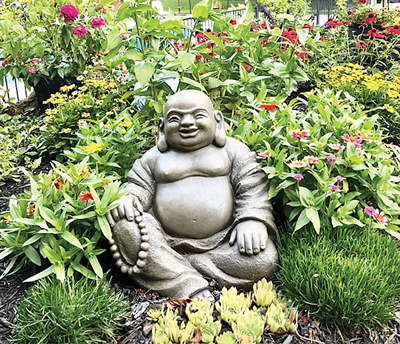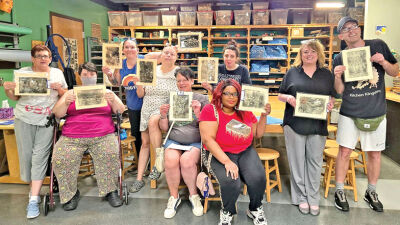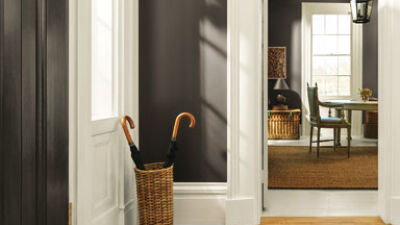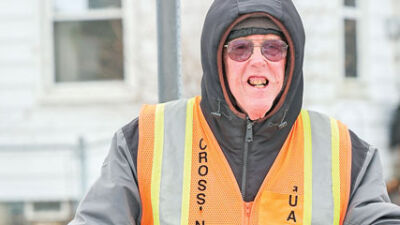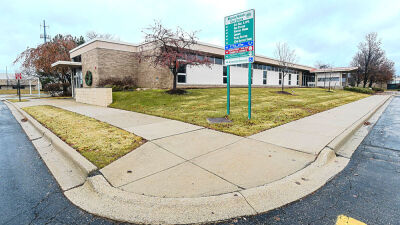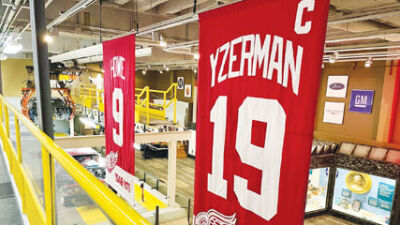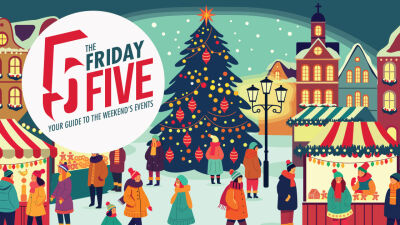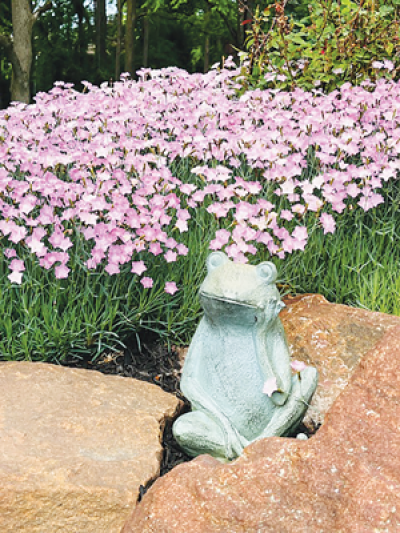
From statues to spikes to globes and more, how you place items in a garden — and which items you choose — is a means of expressing yourself.
Photos provided by Traci Schwartz
METRO DETROIT — Believe it or not, there is more to gardens than planting flowers.
Landscapes, patios, gardens and all sorts of curated outdoor environments are more than places where flowers go — they are places to express yourself.
“To me, gardens are just a great opportunity to create or decorate an outdoor space or room that allows the place to invite nature and wildlife in, and it also gives you a relaxing break from challenging lives,” Sue Keehn, chair of the Harrison Township Beautification Committee, said. “It’s really art in itself and an outlet for everybody to create a spot in their life that’s a place for reflection and peace. … The things that you choose for your garden are a reflection of you.”
Decorating a garden is a personal project that can be approached in different ways, but Keehn recommends taking a few steps when planning out the garden before setting a decoration down.
Beyond finding out the dimensions of the space, composition of the soil, what the natural light and shade coverage of the area is, and how much time and effort maintaining the desired living elements will take, a key consideration is how the landscape will affect the people within it.
“It needs to be a place of reminiscing, a place of conversation … someplace that’s contemplative,” Keehn said. “That would come up first, and then certainly how the particular artifact(s) or sculpture(s) … might affect the people that would view them. Art is meant to cause stimulation and conversation.”
Traci Schwartz, store manager at Piechnik’s Garden Gate in Oakland Township, said decorations can be a way of adding interesting elements to a garden where the environment or plants might not always be the most aesthetically spectacular.
“Let’s say (a garden) has some hardscapes, so it’s more stone or even evergreen,” Schwartz said. “It’s a beautiful look, it’s usually a more tailored look, and the color doesn’t change. Putting some garden art of some sort can bring color or interest to those areas. … A lot of our perennial gardens are seasonal, so adding some elements of true garden art is going to give interest to that space when those plants are not in bloom.”
A garden’s theme, if a specific theme is chosen, can also influence how one selects the decorations to go within it.
“There’s so many garden themes,” Keehn said. “Herb gardens, Asian, shade gardens, cottage, something of a specific color. Even moon gardens; there are some folks who come home at night and that’s the only time they can view their garden. There are plants that will be bright enough to show up at night — those are your whites and pastels — and there are some plants that open their blooms only at night. … If you’re going to go in with those, go the whole hog. Make the theme a reality.”
Items for gardens can be found in many places. Schwartz said garden stores like Piechnik’s can provide a wide variety of decorations — art ranging from globes, cement and metal elements like statues, benches, and more — that fit into gardens and landscapes. One particular class of item Schwartz is interested in is solar-powered lighting elements.
“Sometimes I feel (solar items) can extend the beauty of your garden from a daytime space to a nighttime space,” Schwartz said. “Maybe during the daytime the flowers or your perennial garden or your landscape gets the attention, but once the sun starts to set, some of these other elements can then take center stage.”
Solar lighting can range from straightforward stakes to globes and sculptures that charge during the day and come to life at night.
“I think in Michigan we actually have a very short window to enjoy the outdoors, even into the evening hours,” Schwartz said. “Even having a string of party lights by a sitting area brings off some ambient light, but you can also do that with solar-powered lighting as well.”
Keehn finds decorations for her gardens in a variety of places. She promotes reusing found items and finding uses for items that may run against their originally intended use.
“I do a lot of estate sales and looking at different containers you wouldn’t consider, things that have some age to them that you could, perhaps, grow some moss on and make them look even more a part of the garden,” Keehn said. “Things that are simple that you could do are a birdbath. … You can use either water or a small fountain in them, which is great for that tricking water effect and also attracts wildlife. Or you could plant them with, perhaps, succulents on two layers. They look beautiful that way and they are low maintenance.”
Garden decorations do not have to only be aesthetic. Many items that can decorate gardens also serve different purposes, including bringing certain animals and insects to an area. Bright items can bring hummingbirds and orioles, while other elements can provide homes for pollinators.
“When we’re thinking about gardens these days, it’s very important to consider pollinators,” Keehn said.
Playing to the senses is also something to keep in mind. Plants can provide scents, while decorations can be a source of complimentary sounds, such as the trickling of a fountain or the ringing of wind chimes.
While there are different approaches, philosophies, themes and ideas as to how and why to decorate gardens, most important is that you find satisfaction from the garden you create.
“I think people should be really free to express themselves, no different from how they express themselves and decorate the inside,” Schwartz said. “I am a big believer that anything goes. … It really has to be something that speaks to you, something that you’re going to enjoy seeing there in your garden.”
 Publication select ▼
Publication select ▼